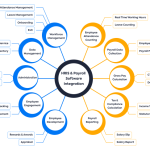In today’s data-driven world, businesses rely heavily on accurate and timely information to make crucial decisions. The importance of data integration and reconciliation has never been more critical. SSIS (SQL Server Integration Services) 950 emerges as the definitive solution for organizations looking to streamline data reconciliation processes. Whether you’re handling disparate data sources or complex enterprise systems, SSIS 950 offers unmatched capabilities to manage, integrate, and reconcile data efficiently.
Introduction
The rapid digital transformation has left businesses juggling an overwhelming amount of data from multiple sources. Information reconciliation, which involves consolidating and verifying data from diverse platforms, has become a significant challenge for enterprises. Fortunately, SSIS 950 provides a robust framework designed to tackle these issues head-on. This guide explores the key features, benefits, and best practices for using SSIS 950 to simplify information reconciliation.
Understanding SSIS 950
SSIS 950 is an upgraded version of Microsoft’s powerful data integration platform—SQL Server Integration Services. Built to automate data extraction, transformation, and loading (ETL), it provides a comprehensive solution for managing large volumes of data from various sources. SSIS 950 not only enhances ETL operations but also focuses on information reconciliation, ensuring that data across systems is accurate, complete, and consistent.
How SSIS 950 Facilitates Information Reconciliation
Data reconciliation is essential for ensuring data consistency across different systems, identifying discrepancies, and resolving them efficiently. SSIS 950 is equipped with features that simplify this complex process by allowing users to automate data matching, comparison, and integration from various sources. The platform ensures data quality, making it easier to identify any inconsistencies and correct them in real-time. This ability is invaluable, particularly for organizations that deal with sensitive information where accuracy is paramount.
SSIS 950 Features for Streamlined Reconciliation
SSIS 950 comes with a host of advanced features that make it the go-to solution for information reconciliation. Key features include:
- Advanced ETL Capabilities: SSIS 950 allows for seamless data extraction from multiple sources, transformation of data into the required formats, and its loading into centralized systems.
- Data Cleansing: The platform provides tools to automatically cleanse data, removing duplicates and resolving inconsistencies before reconciliation begins.
- Automation: SSIS 950 supports automation, meaning that data reconciliation can be scheduled to run at set intervals, significantly reducing manual intervention.
- Error Handling: With built-in error handling, users can automatically identify and fix issues during the ETL and reconciliation process.
- Data Lineage: This feature tracks the data’s origin, how it has been processed, and where it moves in the system, offering complete traceability during reconciliation.
Why Choose SSIS 950 for Data Integration and Reconciliation?
There are several reasons why SSIS 950 stands out when it comes to information reconciliation. First, it offers an unparalleled level of automation, reducing the time and effort needed for manual data checks. Second, its advanced features ensure that data accuracy is maintained throughout the integration process. Finally, SSIS 950 is built on a scalable architecture, meaning it can handle the increasing volume of data as businesses grow.
The Role of Automation in SSIS 950
One of the key benefits of SSIS 950 is its ability to automate repetitive tasks, especially in large-scale reconciliation efforts. By scheduling data flows and reconciliation processes, SSIS 950 eliminates the need for manual input, reducing the risk of human error and ensuring that data is synchronized at all times. Automation also ensures that discrepancies between systems are identified and corrected in real time, allowing organizations to maintain data integrity.
How SSIS 950 Handles Data Discrepancies
Data discrepancies can occur for various reasons, including human error, system outages, or data entry mistakes. SSIS 950 offers several ways to resolve such discrepancies. Through its data cleansing features, SSIS 950 automatically identifies and fixes common issues such as duplicate records or formatting errors. Additionally, the platform provides detailed reports, allowing users to quickly identify and address more complex discrepancies.
Improving Data Quality with SSIS 950
Data quality is a significant concern for organizations that depend on accurate information for decision-making. SSIS 950 addresses this issue through its comprehensive data profiling and cleansing tools. Before reconciliation takes place, SSIS 950 allows users to run data quality checks, ensuring that all data sources meet the required standards for consistency and accuracy. This process not only improves data quality but also streamlines the reconciliation process by eliminating common issues upfront.
Best Practices for Implementing SSIS 950
For organizations looking to implement SSIS 950 for information reconciliation, following best practices can make a significant difference. Key recommendations include:
- Defining Clear Data Standards: Establishing clear data formats and standards across all systems ensures that reconciliation processes run smoothly.
- Automation of Reconciliation: Automating the reconciliation process where possible can save time and reduce errors.
- Regular Data Audits: Conducting regular data audits will ensure that data discrepancies are identified early on and addressed before they become significant issues.
- Monitoring and Reporting: Setting up monitoring tools to track the reconciliation process can help catch errors in real-time and provide visibility into data integrity.
SSIS 950 in Action: A Use Case for the Financial Industry
In industries like finance, where data accuracy is paramount, SSIS 950 proves to be an invaluable tool. Consider a scenario where a bank needs to reconcile transaction data across several different systems. Using SSIS 950, the bank can automate the reconciliation process, ensure data quality, and quickly identify any discrepancies. By leveraging the platform’s powerful ETL and reconciliation features, the bank can significantly reduce the time spent on manual checks, while also improving the accuracy and reliability of its data.
SSIS 950 for Enterprise-Scale Data Reconciliation
For larger enterprises, data reconciliation can be a daunting task. SSIS 950 simplifies this by allowing for the integration of data from multiple sources, whether on-premises or cloud-based, into a centralized repository. The platform is scalable, meaning that it can handle increasing data volumes without a loss in performance. This makes it ideal for enterprises that need to reconcile vast amounts of information daily.
Security and Compliance with SSIS 950
Another advantage of using SSIS 950 is its focus on security and compliance. The platform ensures that sensitive data is protected throughout the reconciliation process. With encryption and role-based access controls, SSIS 950 helps organizations meet industry-specific compliance requirements, such as GDPR or HIPAA, ensuring that data is not only accurate but also secure.
The Future of Information Reconciliation with SSIS 950
As data continues to grow in volume and complexity, the need for effective reconciliation solutions like SSIS 950 will only increase. With its robust feature set, scalability, and focus on automation, SSIS 950 is poised to remain the definitive solution for information reconciliation in the years to come.
FAQs
What is SSIS 950? SSIS 950 is an enhanced version of SQL Server Integration Services designed to improve data integration and reconciliation processes through automation and advanced data cleansing capabilities.
How does SSIS 950 help in data reconciliation? SSIS 950 simplifies data reconciliation by automating the process of identifying, matching, and resolving data discrepancies across various systems and ensuring that data is accurate and consistent.
Can SSIS 950 handle large-scale enterprise data? Yes, SSIS 950 is scalable and capable of managing large volumes of data, making it ideal for enterprise-scale data integration and reconciliation efforts.
Is SSIS 950 secure? SSIS 950 provides robust security features, including encryption and role-based access controls, ensuring that sensitive data remains protected throughout the reconciliation process.
How does SSIS 950 automate the reconciliation process? SSIS 950 allows users to schedule reconciliation tasks, automating the process of comparing and synchronizing data across systems, reducing the need for manual intervention.
What industries benefit from SSIS 950? Industries like finance, healthcare, and retail, where data accuracy and reconciliation are critical, benefit greatly from the advanced features offered by SSIS 950.
Conclusion
In a world where data is the lifeblood of business operations, having a reliable, efficient, and secure data reconciliation solution is essential. SSIS 950 stands out as the definitive answer to this challenge, offering unparalleled automation, scalability, and data quality features. Whether you’re a small business or a large enterprise, SSIS 950 provides the tools needed to ensure that your data remains accurate, consistent, and actionable. With its focus on simplifying and streamlining the reconciliation process, SSIS 950 is not just a solution for today—it’s a solution for the future.











